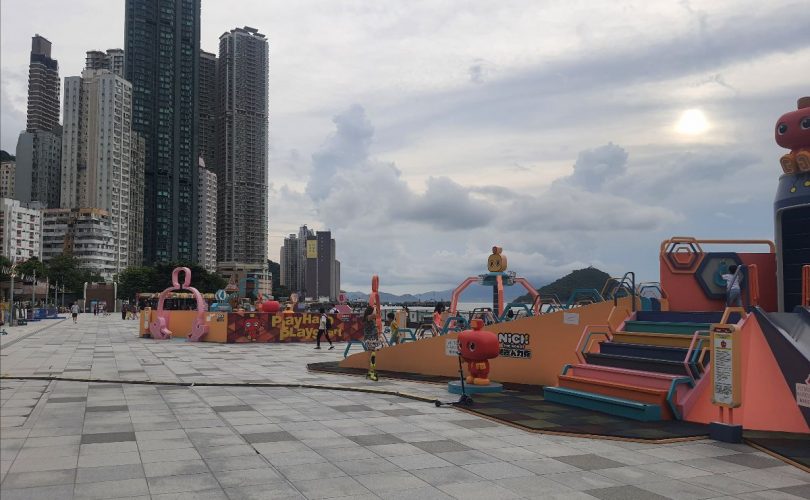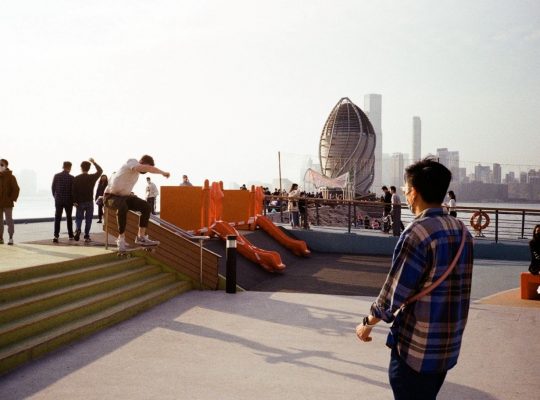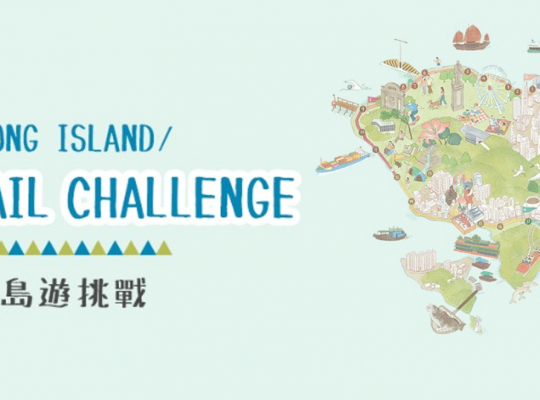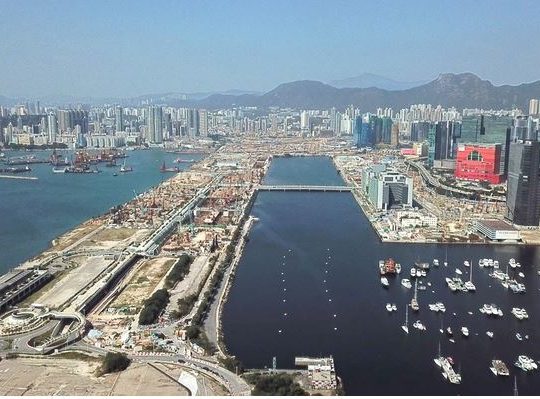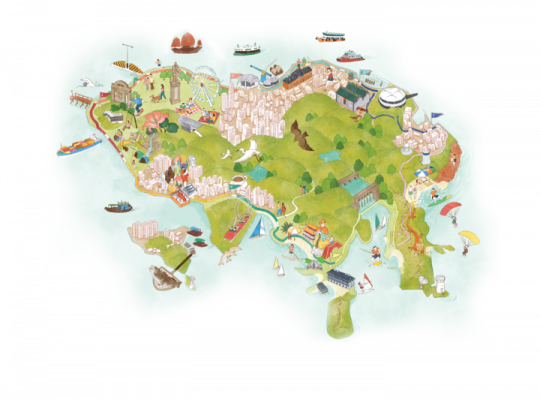The Belcher Bay Promenade in Kennedy Town fully opened in October of 2020, providing a dynamic and multipurpose harbourfront space for residents and visitors. The space was previously part of the adjacent cargo working area and offers 5900 square meters of public space along 172 meters of waterfront. It is highly accessible thanks to its proximity to public transport as well as its connections to the hinterland.
Through its ‘incremental approach’, the Harbourfront Commission collaborates with different NGOs and stakeholders in opening up coastal promenades for citizens, spaces for strolling and exercise, as well as for education and entertainment. At Belcher Bay sustainability is promoted with a hydroponic greenhouse and recycled furniture including cargo pellets for community use.
From a recent survey conducted by Designing Hong Kong we learned that the Belcher Bay promenade is a popular space and widely appreciated by the users. This support our long-term campaign to protect waterfront spaces from development. It also demonstrates the success of collaborative management models for public space designs and operation.
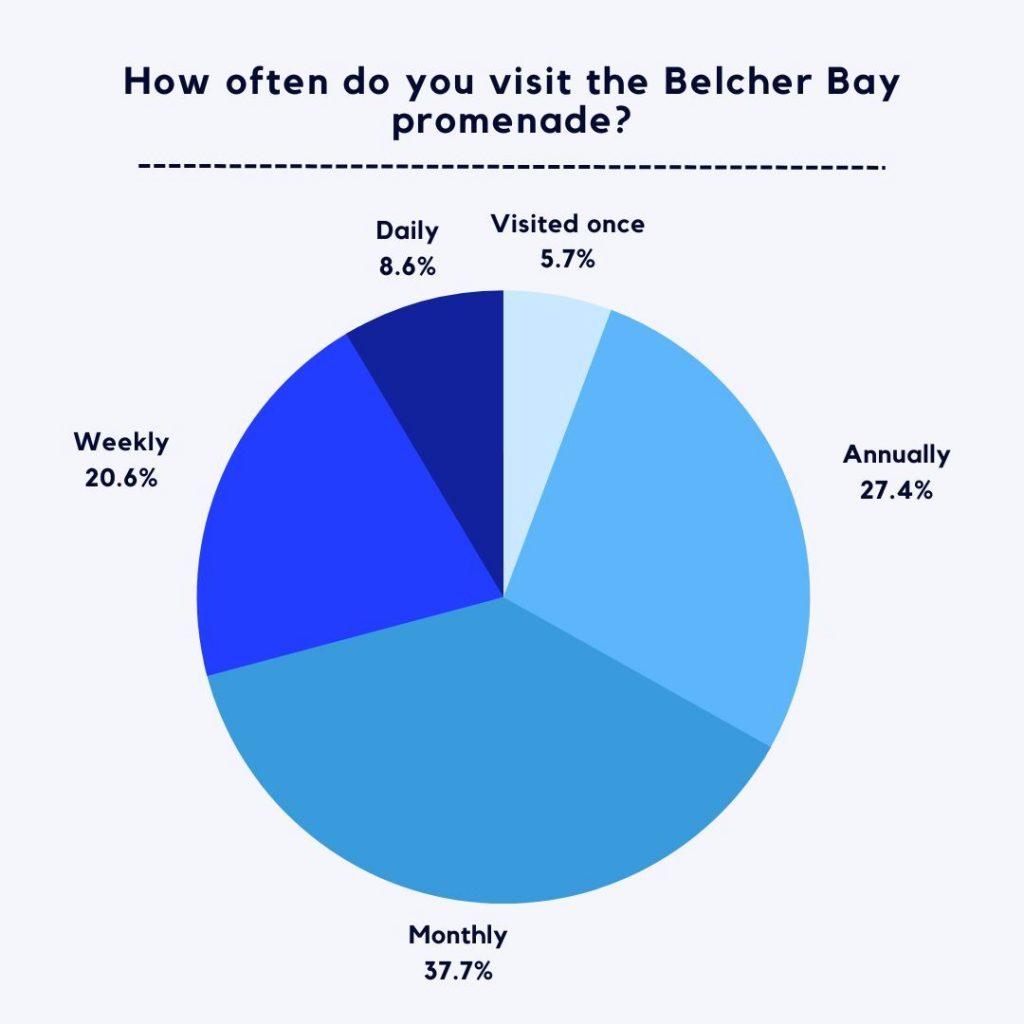
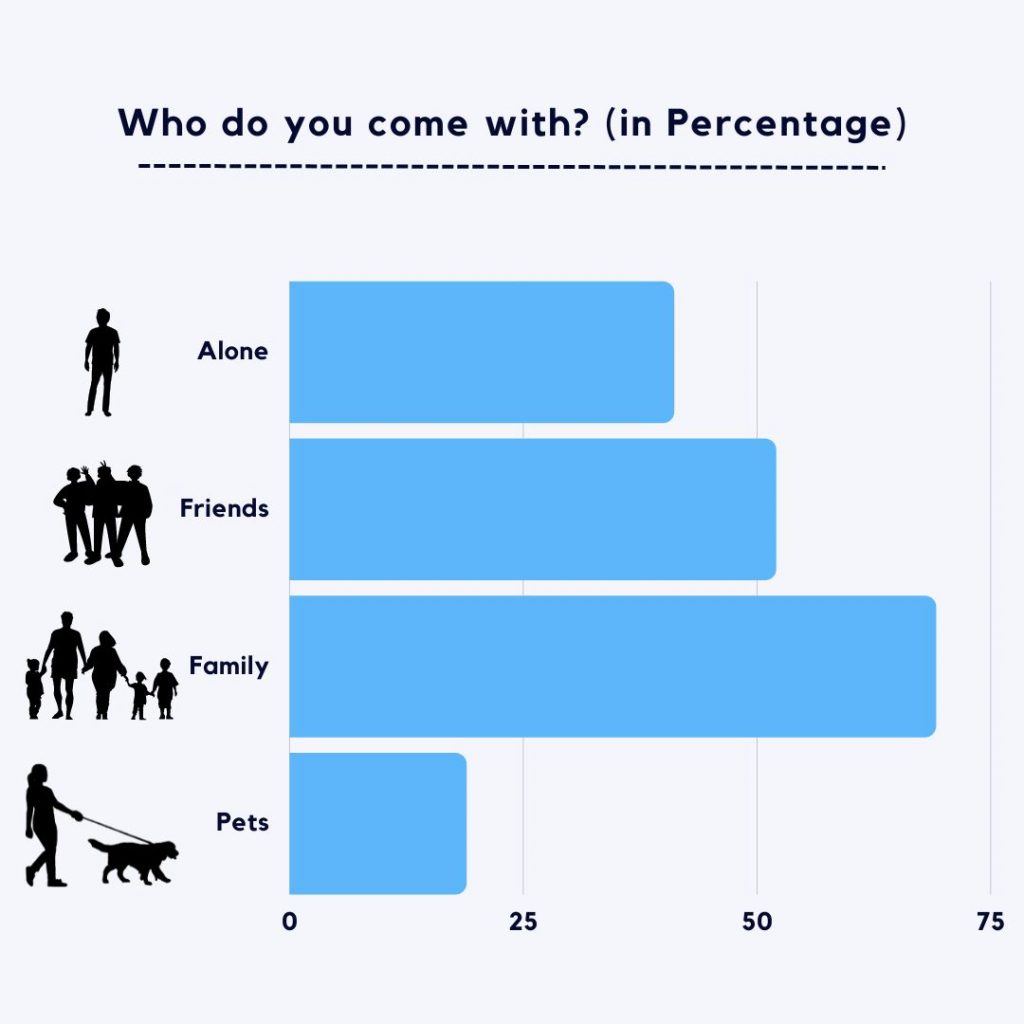
From dawn to the evening, the use of the space evolves. The sunset and early evening attracts most users – from skateboarders, sunset viewers, photographers to youngsters enjoying a drink on the water’s edge in front of the railing. Earlier in the afternoon, the space attracts younger children. Families with strollers, children playing and individuals basking with drinks in the sun bought from nearby stores. In the morning, the cool breeze attracts elders and qigong practitioners as well as joggers. This flexible space allows a great variety of different activities creates a unique communal atmosphere.
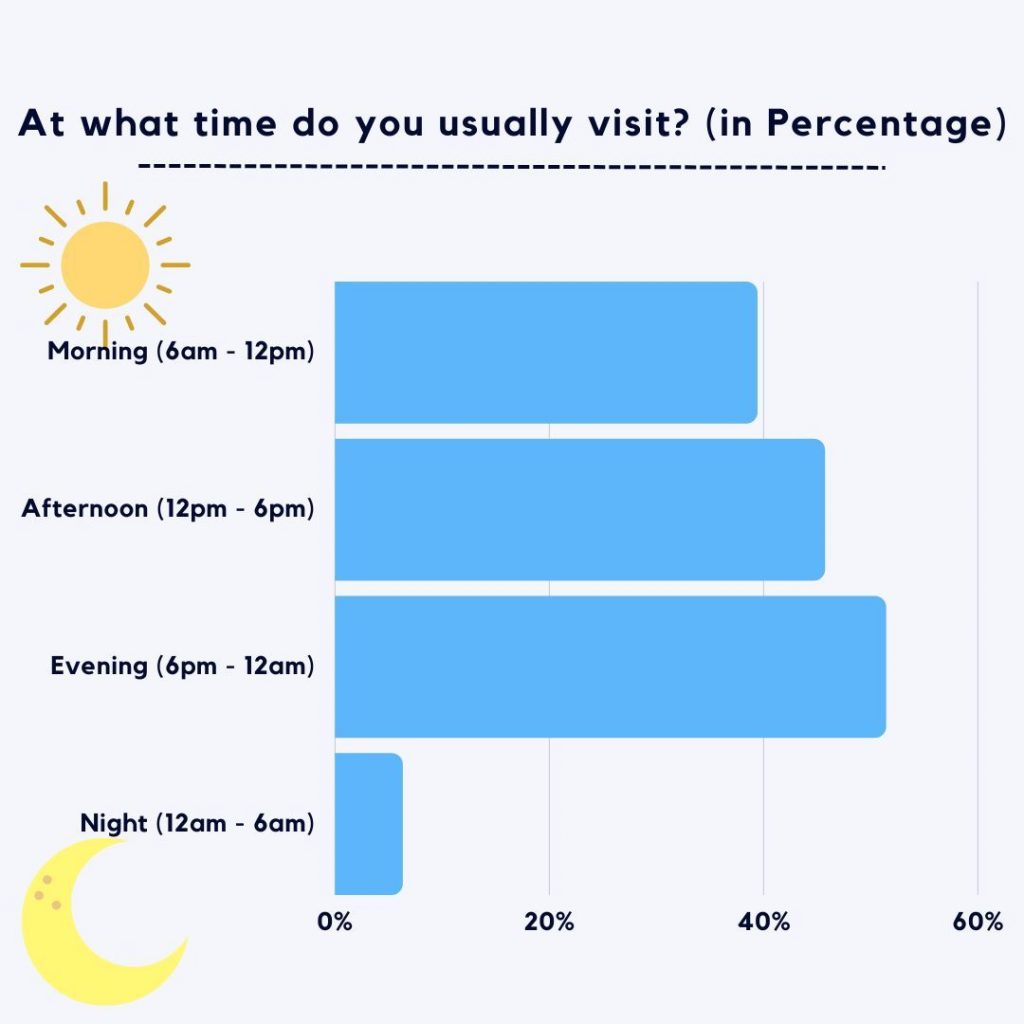

Survey respondents underlined the multi-purpose function of the open waterfront and how a strong community is fostered by the dynamic of activities evolving throughout the day. The space ‘has something for everyone’: skaters, dog walkers, playing kids, place to sit and eat, enjoying the harbour views, and “somewhere to go that’s not indoors!” as a respondent replied enthusiastically. The sense of community is accentuated by the fact that the local population makes up more than half of the users. The promenade is a cherished public space for the ‘west islanders’ of Hong Kong
When asked for suggestions to improve the waterfront, respondents urged for more seating, more shading as well as more greenery. Our research team also identified the need for more cleansing activities as they spotted significant littering near the water edge.
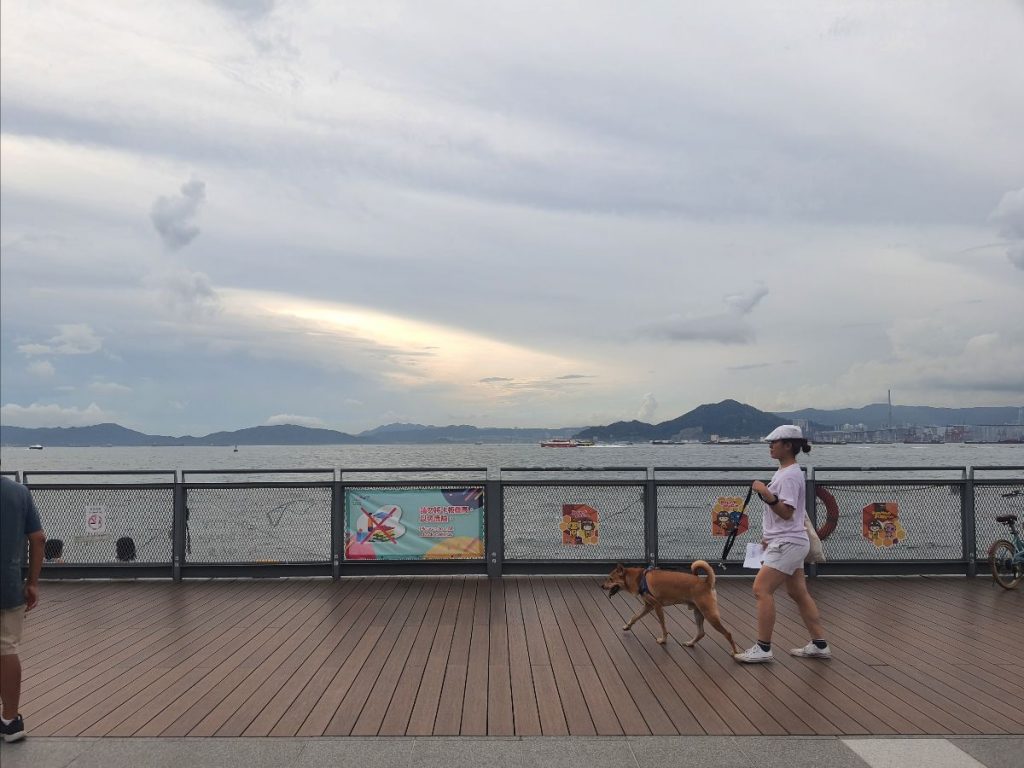
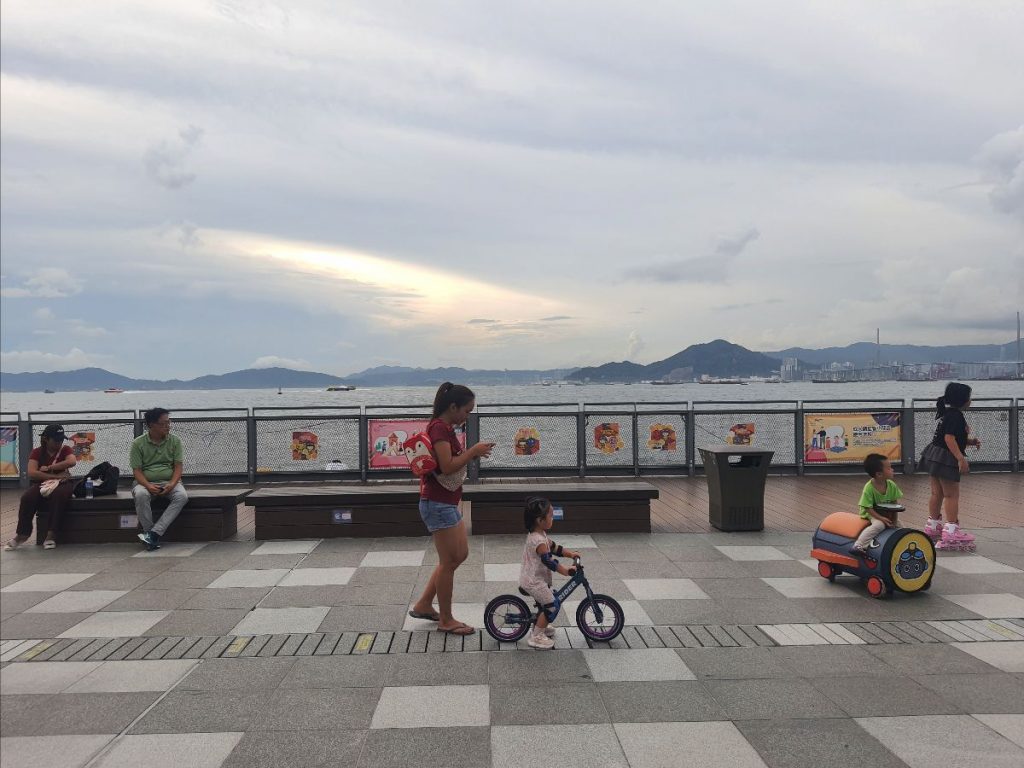
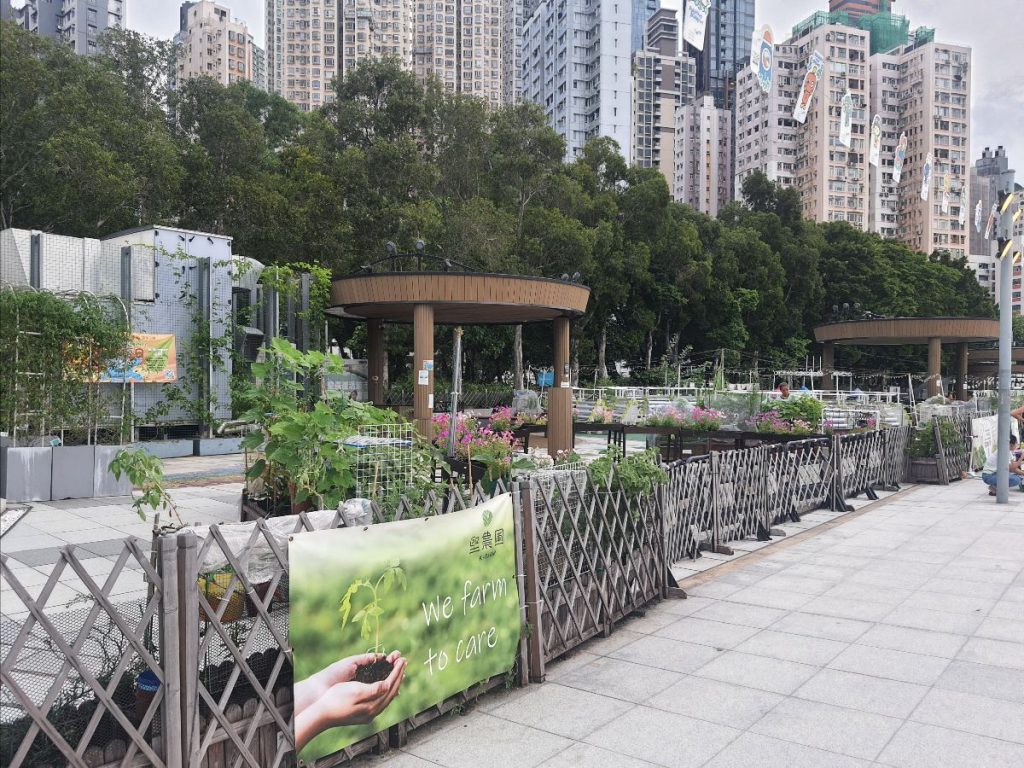
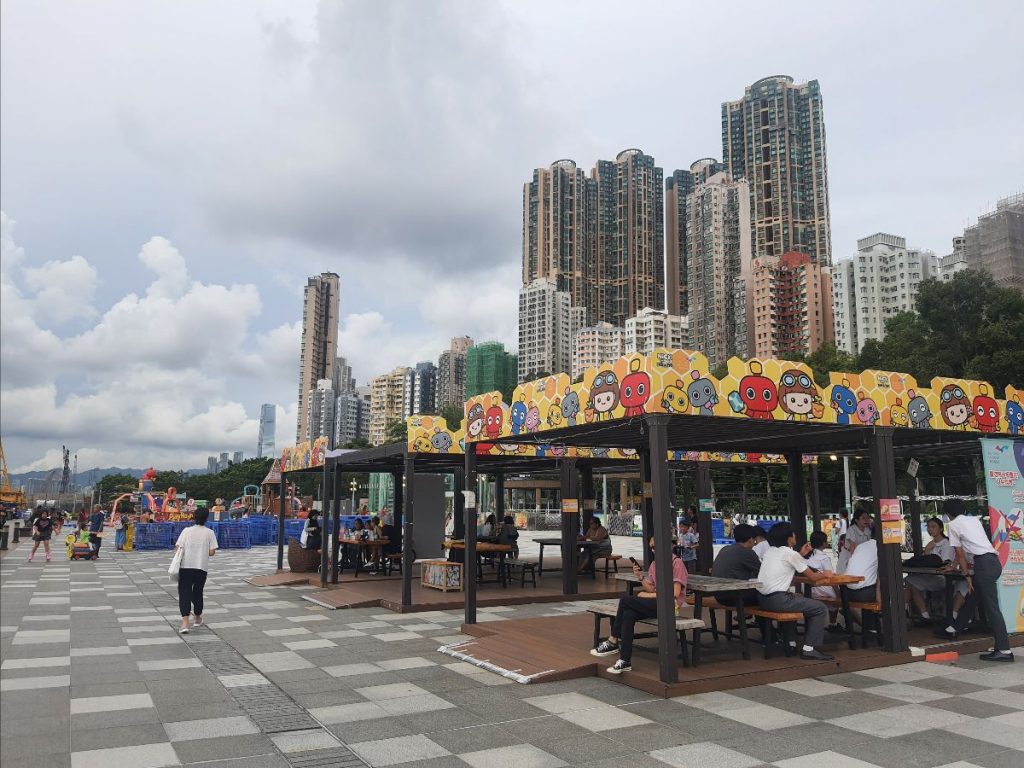
Unfortunately, this waterfront is under threat of roadworks needed to connect Hong Kong Island with Kai Yi Chau and Lantau. Tunnel construction requires a ‘temporary’ closure of the entire waterfront for at least 6 years. What remains of the waterfront once the tunnel portal is completed, is a narrow footpath with only a few connections with the hinterland.
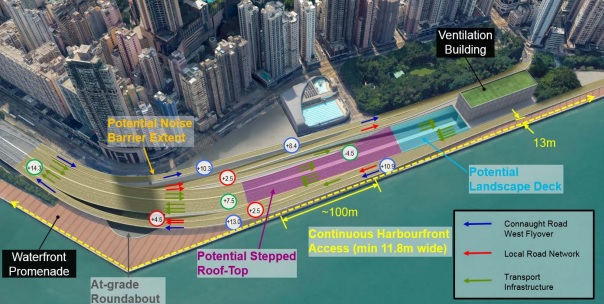
Many respondents expressed their desire for their public space to stay open, ‘Please don’t close it!’ and ‘leave it as it is’ were some of the pleas. Others suggest a widening of the waterfront and pointed at the lack of public space. A research by Civic Exchange shows that residents have only 2.7 square meters of urban public space per capita in Hong Kong. Singapore, while half the our size, offers 7.4 square meters per capita. This lack of communal spaces makes the protection of existing public spaces pivotal.
The survey asked what alternative public spaces respondents would use during the closure. 88% of respondents replied that they did not know any suitable alternative. Underlying its uniqueness, they stated that this space is ‘one of the few places that can be easily accessed by the community adjacent to the harbour’.
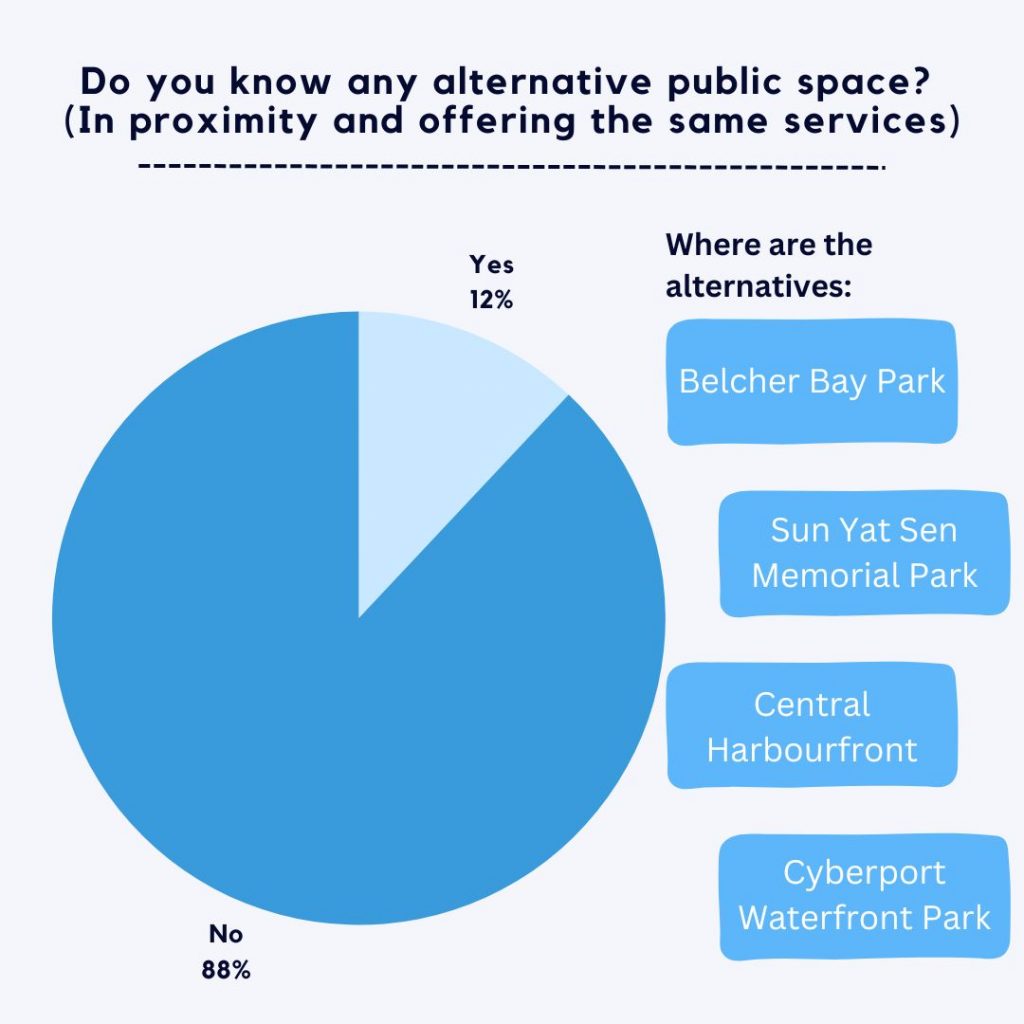
As we may not be able to stop the construction of the tunnel portal and loss of the waterfront space, the question is what mitigating measures can be implemented. Key is to make the remaining waterfront as accessible as possible with many linkages to the hinterland. The success of this promenade and its flexible and collaborative management model serves as an example for future public space in Hong Kong. The fight for the protection of our cherished public spaces goes on.
卑路乍灣海濱 — 值得保留和學習的公共空間
位於堅尼地城的卑路乍灣海濱於在2020年10月全面開放。這個曾經的貨運工作區的地方全長172米,佔地約5900平方米的海濱從貨物起卸區搖身一變成多功能的海濱空間。加上交通設施及與鄰近社區的聯繫,令卑路乍灣海濱成為廣受居民歡迎的社區空間。
海濱事務委員會透過「先駁通,再優化」的策略,與不同非政府組織和持份者合作,將沿海用地轉化為海濱長廊,為居民提供運動空間、教育和娛樂場所,甚至在卑路乍灣海濱加入水耕社區溫室及重用回收貨板等方式促進可持續發展。
根據我們早前的調查,結果顯示卑路乍灣海濱是廣受歡迎和讚賞的空間,這加強了我們保護該空間免受發展的理據,與此同時,卑路乍灣海濱亦可作為其他公共空間設計的榜樣。

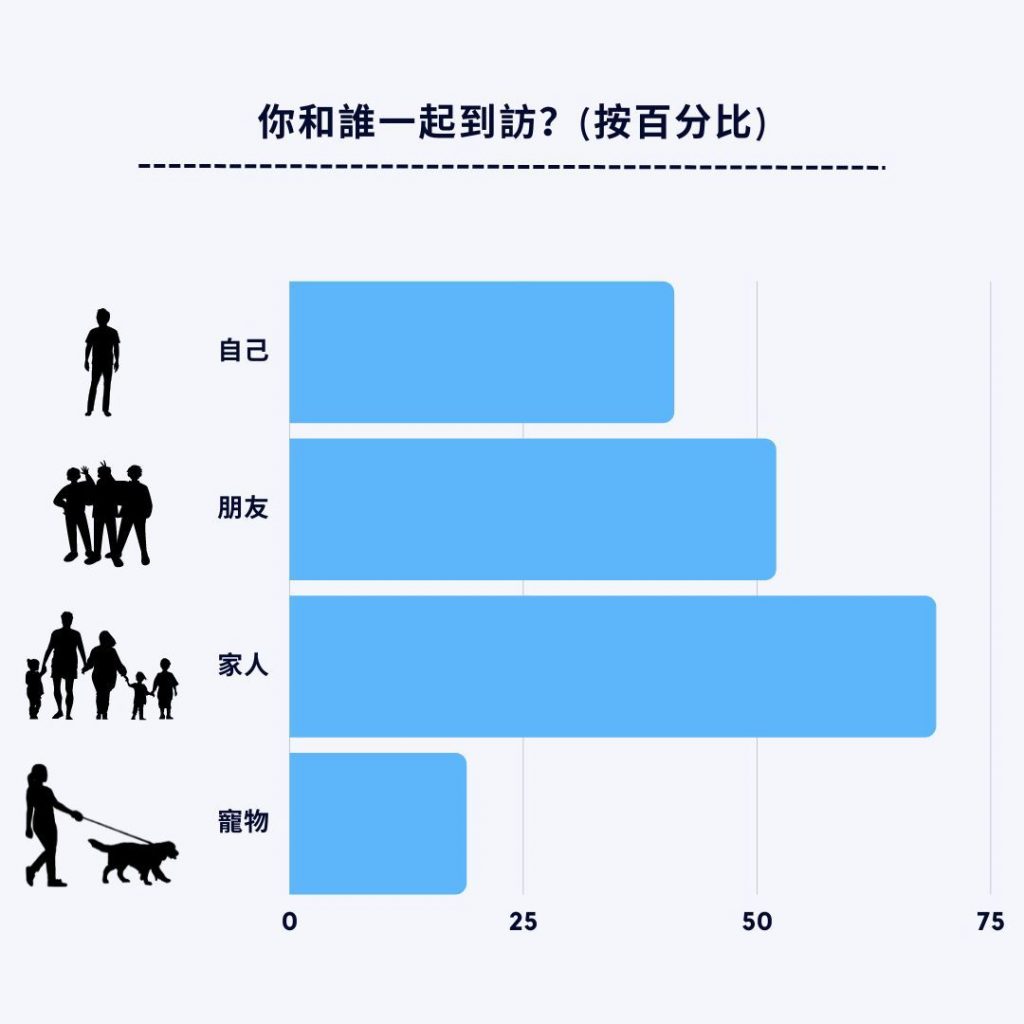
從早到晚,不同時段的使用者都為這個海濱塑造不同的功能和吸引力。調查顯示傍晚時分吸引最多的使用者,特別是滑板手、欣賞日落的居民和攝影師,以及在海傍享受美食的年輕人。下午時份的海濱則佈滿混雜散步的人、嬉戲的小孩,偶爾沐浴陽光並享受在附近商店購買的小吃的人。早上時分,涼爽的微風吸引了老年人和氣功練習者。這種公共空間的多樣性創造出一種獨特的氛圍,令不同的使用者都對這個空間建立了歸屬感。
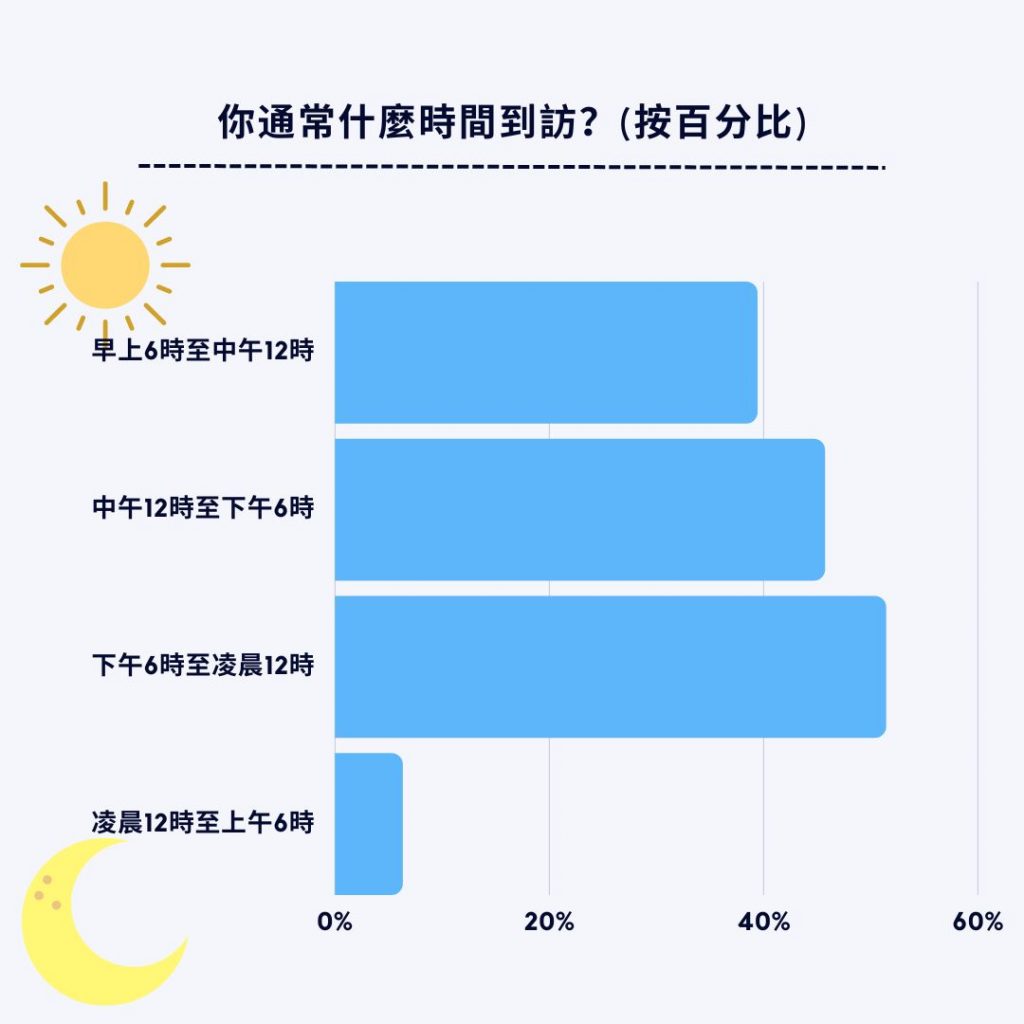

受訪者強調這個空間的多元性,以及從空間中進行不斷活動培養出的濃厚社區感。一位回答者熱情地表示:「這個空間對每個人都有吸引力——滑板者、狗狗、孩子們可以玩耍,還有可以坐下來休息和用餐的地方,可以欣賞海景,不必待在室內!」此外,由於超過一半的海濱使用者都是住在附近的居民,社區意識更加突出,使得這個海濱長廊成為西區居民珍愛的公共空間。調查中亦有不少受訪者提出的建議,例如增加座位、提供更多的遮蔽和綠化。我們在實地觀察到海濱長廊的岸邊亦有顯著的垃圾堆放。
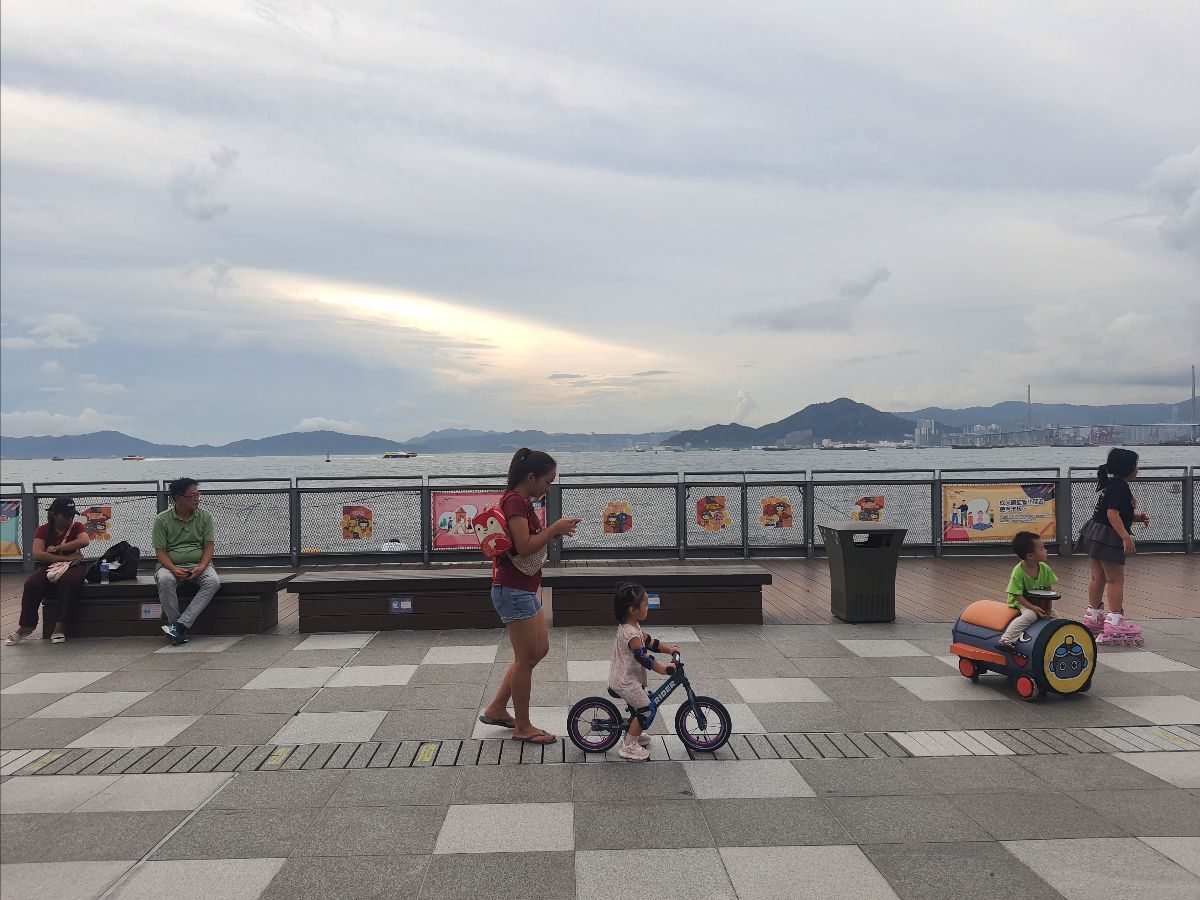
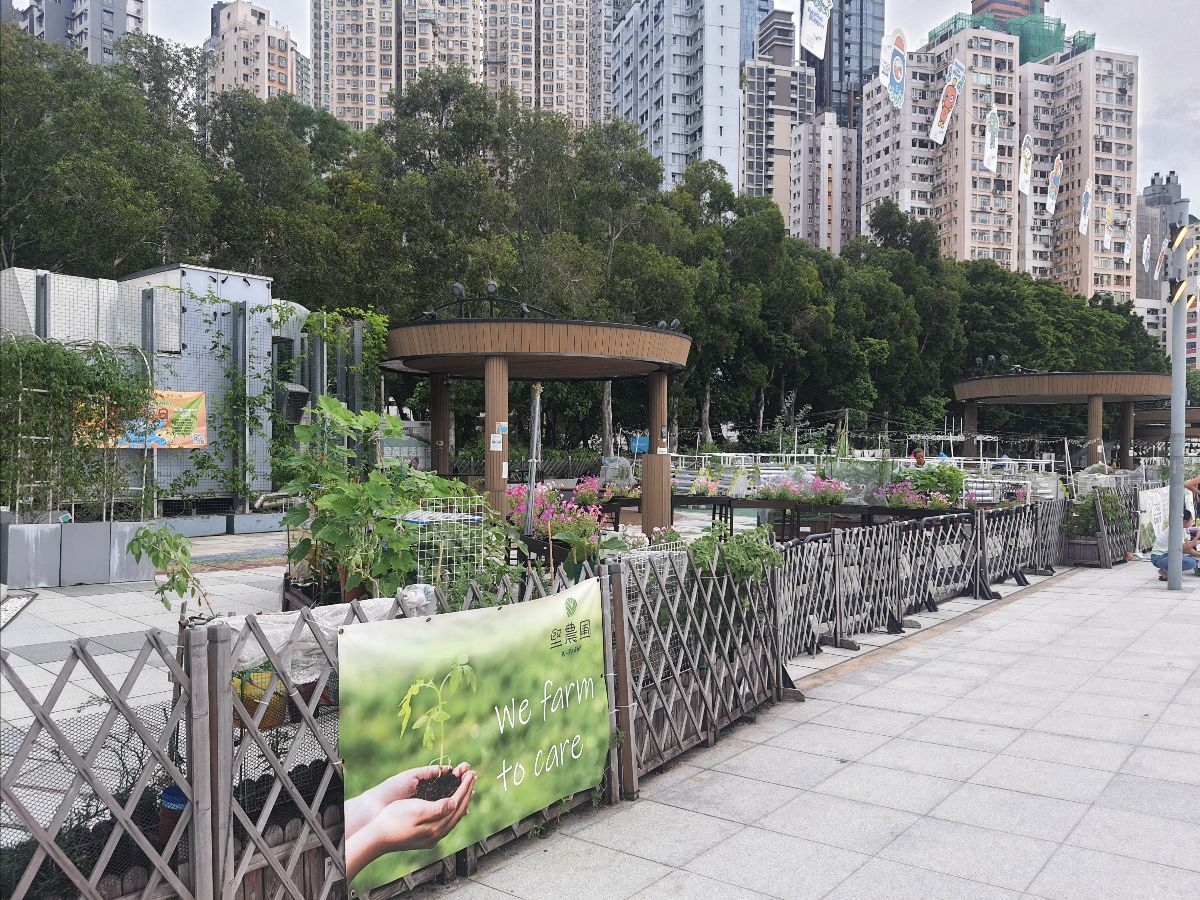
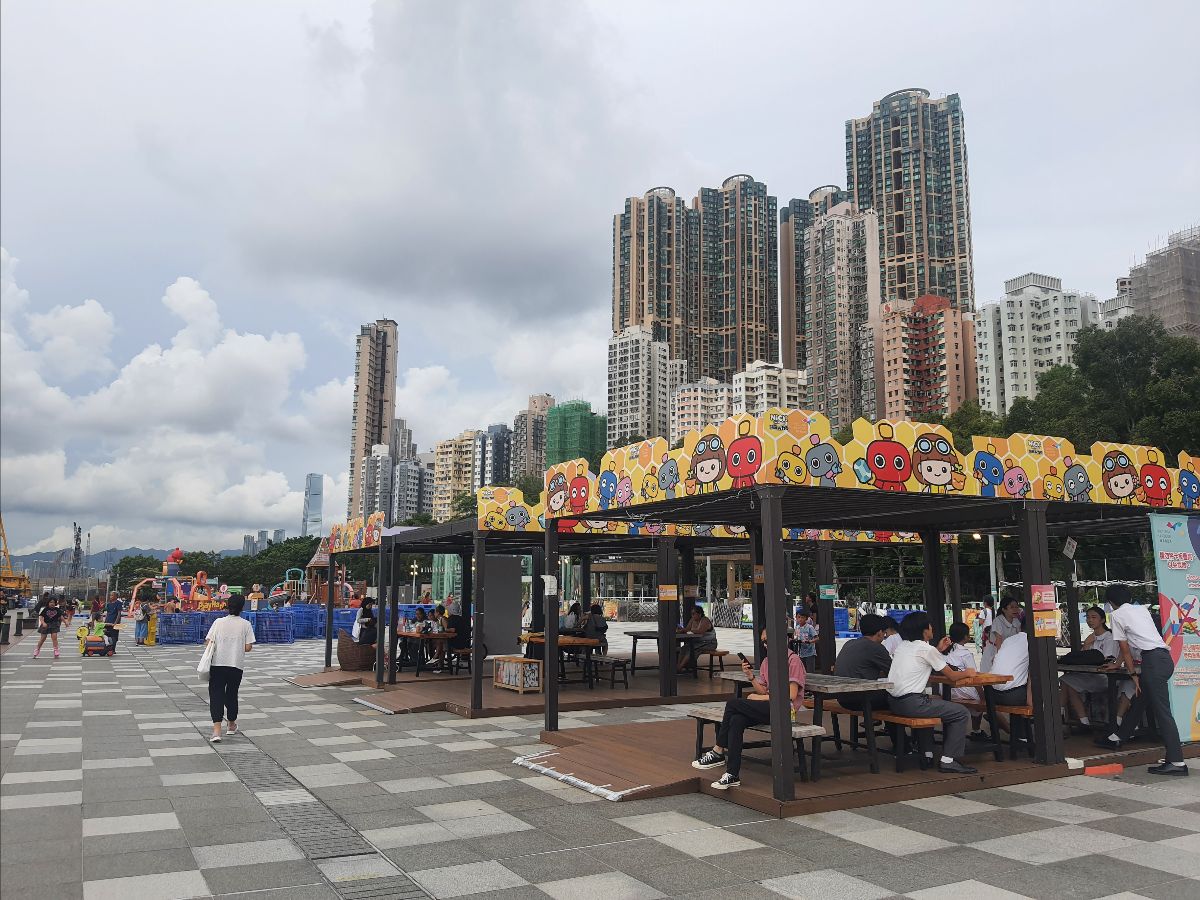
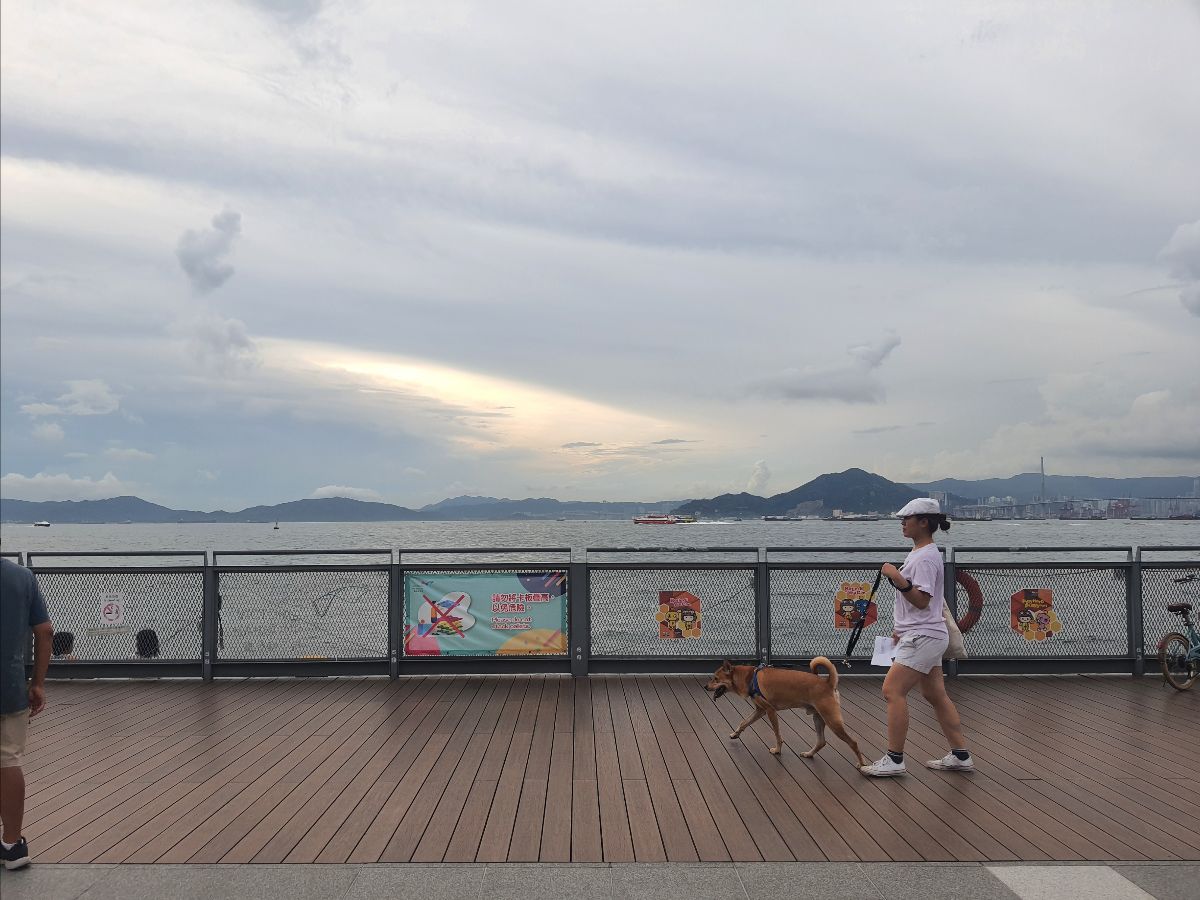
不幸的是,這個居民的聚腳點現正面臨拆卸的威脅。連接港島及交椅洲人工島的隧道入口將設置在此,隧道的建設意味著整個海濱將「暫時」關閉至少6年。而隧道落成後,海濱將縮小為一條狹窄的行人路,與內陸的聯繫減少。
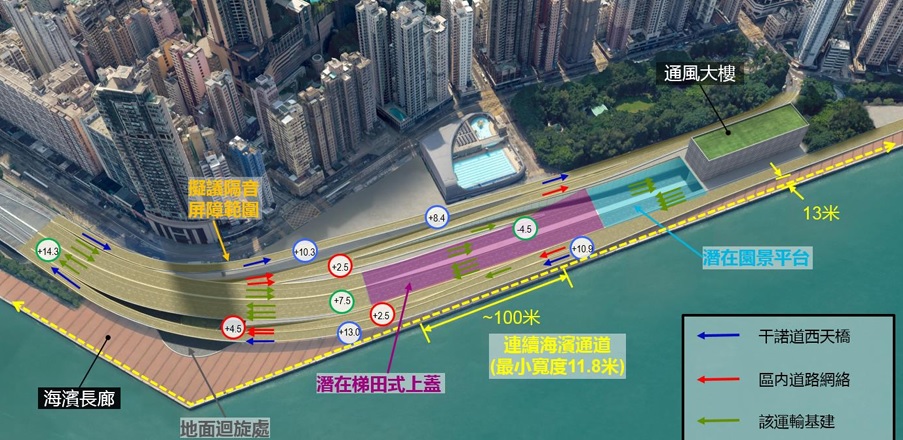
因此,許多受訪者都希望這個公空空間可以保留。像「請不要拆卸!」或者「保持現狀」等都是我們調查中經常收集到的回應。部份受訪者甚至建議擴建海濱,認為「香港需要更多的公共空間」。據公共政策研究機構Civic Exchange的數據顯示,香港居民平均每人只有2.7平方米的公共空間,而面積僅為香港一半的新加坡則擁有7.4平方米。欠缺公空空間正是我們需要保護僅存公共空間的原因之一。
在詢問關閉卑路乍灣海濱期間可能的替代公共空間時,88%的受訪者都未能回答其他可替代的公共空間,並認為這個空間是「從社區輕鬆進入並鄰近海港的少數地方」,凸顯了它的獨特性。

我們可能無法阻止興建人工島隧道,但我們仍然有哪些選擇呢?假若海濱必須收回及重建,政府可以通過橋樑或隧道建立興建更多的出入口使行人到達海傍。另外這個海濱管理模式的成功也可以作為其他公共空間的參考,以促進更廣闊和多功能的空間。與此同時,我們必須繼續爭取保護我們珍愛的公共空間。

